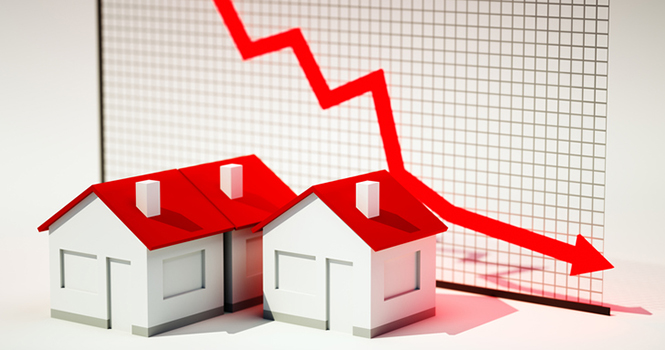Existing-home sales sunk in April, dragged down by virtually absent supply, the National Association of REALTORS® (NAR) reports.
Existing-home sales totaled 5.57 million, a 2.3 percent decrease from March, but a 1.6 percent increase from one year prior. Inventory increased, however, by 7.2 percent to 1.93 million—though still 9 percent below one year prior.
“Last month’s dip in closings was somewhat expected given that there was such a strong sales increase in March at 4.2 percent, and new and existing inventory is not keeping up with the fast pace homes are coming off the market,” says Lawrence Yun, chief economist at NAR. “Demand is easily outstripping supply in most of the country and it’s stymieing many prospective buyers from finding a home to purchase.”
Inventory is currently at a 3.8-month supply. Existing homes averaged 29 days on market in April, five fewer days than in March and 10 fewer days than one year prior. Non-distressed homes took 28 days to sell. All told, 52 percent of homes sold in April were on the market for less than one month.
“REALTORS® continue to voice the frustration their clients are experiencing because of the insufficient number of homes for sale,” Yun says. “Homes in the lower- and mid-market price range are hard to find in most markets, and when one is listed for sale, interest is immediate and multiple offers are nudging the eventual sales prices higher.”
“On the supply side, new homes are predominantly being built for the mid- to upper-price range, but on the demand side, buyers are increasingly seeking low- to moderately-priced homes,” says Joseph Kirchner, senior economist at realtor.com®. “This mismatch makes landing an affordable home that much tougher, and is keeping many would-be buyers out of the market.”
“Existing-home sales posted substantial gains in the first quarter of 2017; however, we are concerned about the impact of low inventory on sales and prices as we move into the peak season for the housing market,” says Ruben Gonzalez, staff economist at Keller Williams. “If low inventory conditions persist into the summer months, sales could be constrained and the resultant increases in prices could exacerbate the effect of interest rate increases on affordability.”
The metropolitan areas with the fewest days on market in April, according to data from realtor.com, were San Jose-Sunnyvale-Santa Clara, Calif. (23 days); San Francisco-Oakland-Hayward, Calif. (25 days); Denver-Aurora-Lakewood, Colo. (27 days); and Seattle-Tacoma-Bellevue, Wash. (28 days).
The median existing-home price for all types of houses (single-family, condo, co-op and townhome), at the same time, was $244,800—a 6 percent increase from one year prior. The median price for a single-family existing home was $246,100, while the median price for an existing condo was $234,600.
Single-family existing-home sales came in at 4.95 million in April, a 2.4 percent decrease from 5.07 million in March and a 1.6 percent increase from 4.87 million one year prior. Existing condo and co-op sales came in at 620,000, a 1.6 percent decrease from March, but a 1.6 percent increase from one year prior.
Twenty-one percent of existing-home sales in April were all-cash, with 15 percent by individual investors. Five percent were distressed.
Existing-home sales in the Midwest rose 3.8 percent to 1.36 million, with a median price of $194,500. Existing-home sales in the Northeast fell 2.7 percent to 730,000, with a median price of $267,700. Existing-home sales in the West fell 3.3 percent to 1.18 million, with a median price of $258,600. Existing-home sales in the South fell 5 percent to 2.30 million, with a median price of $217,700.
First-time homebuyers comprised 34 percent of existing-home sales in April.
For more information, please visit www.nar.realtor.
For the latest real estate news and trends, bookmark RISMedia.com.











